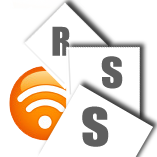 MIT has recently developed a way to use solar cells on printable paper. The technology isn’t as efficient as photovoltaic systems currently are, using only about 1.5 to 2% of the sun’s energy for power while today’s bulkier silicon technology can harvest up to 20% of the sun’s energy, but the potential for the future is exciting.
MIT has recently developed a way to use solar cells on printable paper. The technology isn’t as efficient as photovoltaic systems currently are, using only about 1.5 to 2% of the sun’s energy for power while today’s bulkier silicon technology can harvest up to 20% of the sun’s energy, but the potential for the future is exciting.Printable paper could become a source of energy, and the application of these micro thin cells could eventually be transmitted by a printer or even a staple gun.
Experts estimate that even if .3% of the U.S. had photovoltaics functioning at 10% efficiency, it would produce more than three times the amount of energy necessary for the entire country. While printable paper micro film technology is likely about a decade away from going commercial, the possibilities are astounding.
Imagine a custom paper size fit like wallpaper on the side of a house, able in one sunny day to produce and store enough energy for an entire year. Gas heating would become a technology of yesteryear as the only payment for energy would be a one time installation fee. With the help of paper, one of the more common technologies in society, we can make energy saving a feasible and valuable priority.









